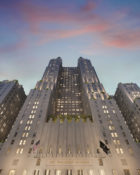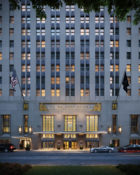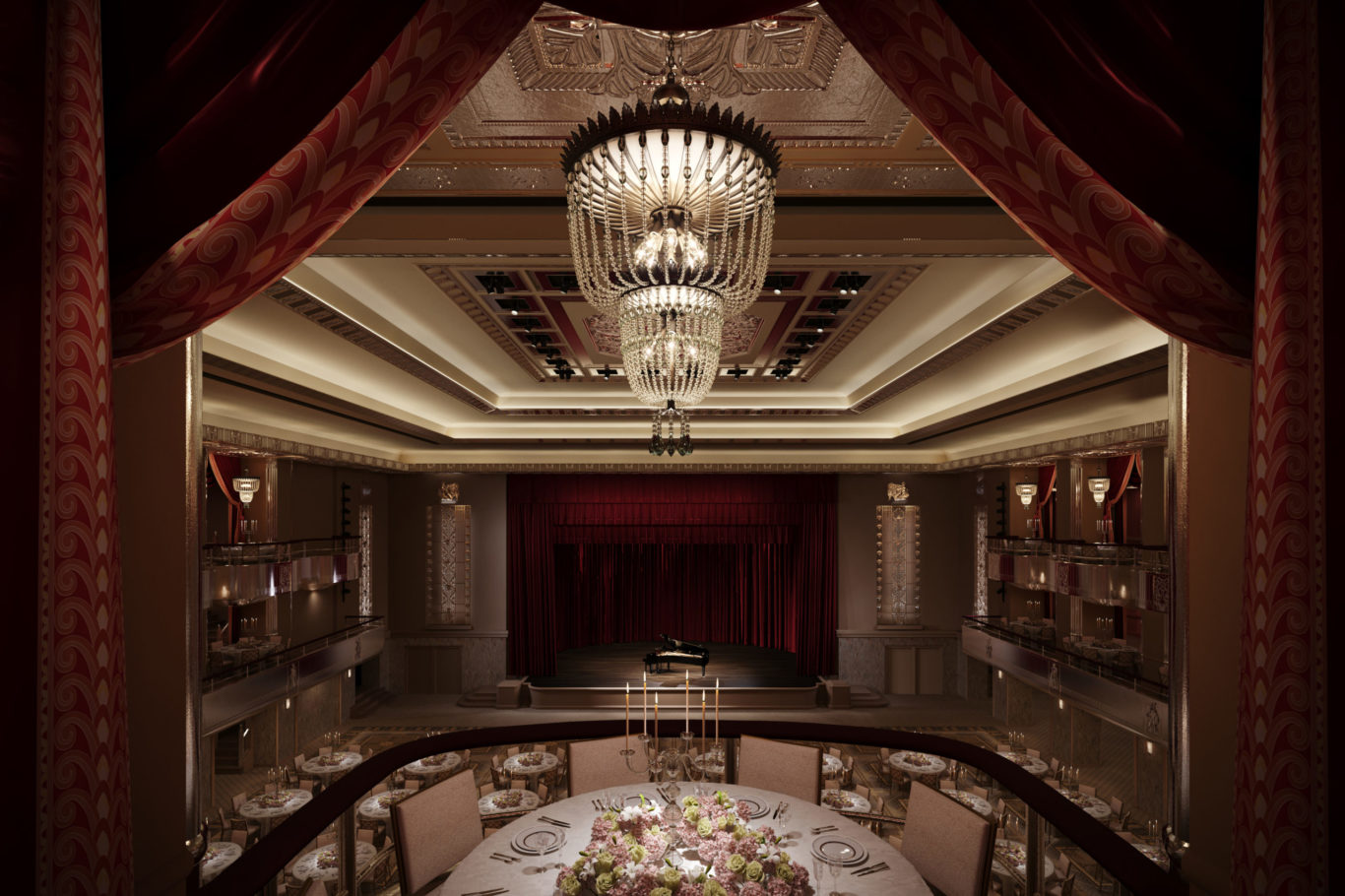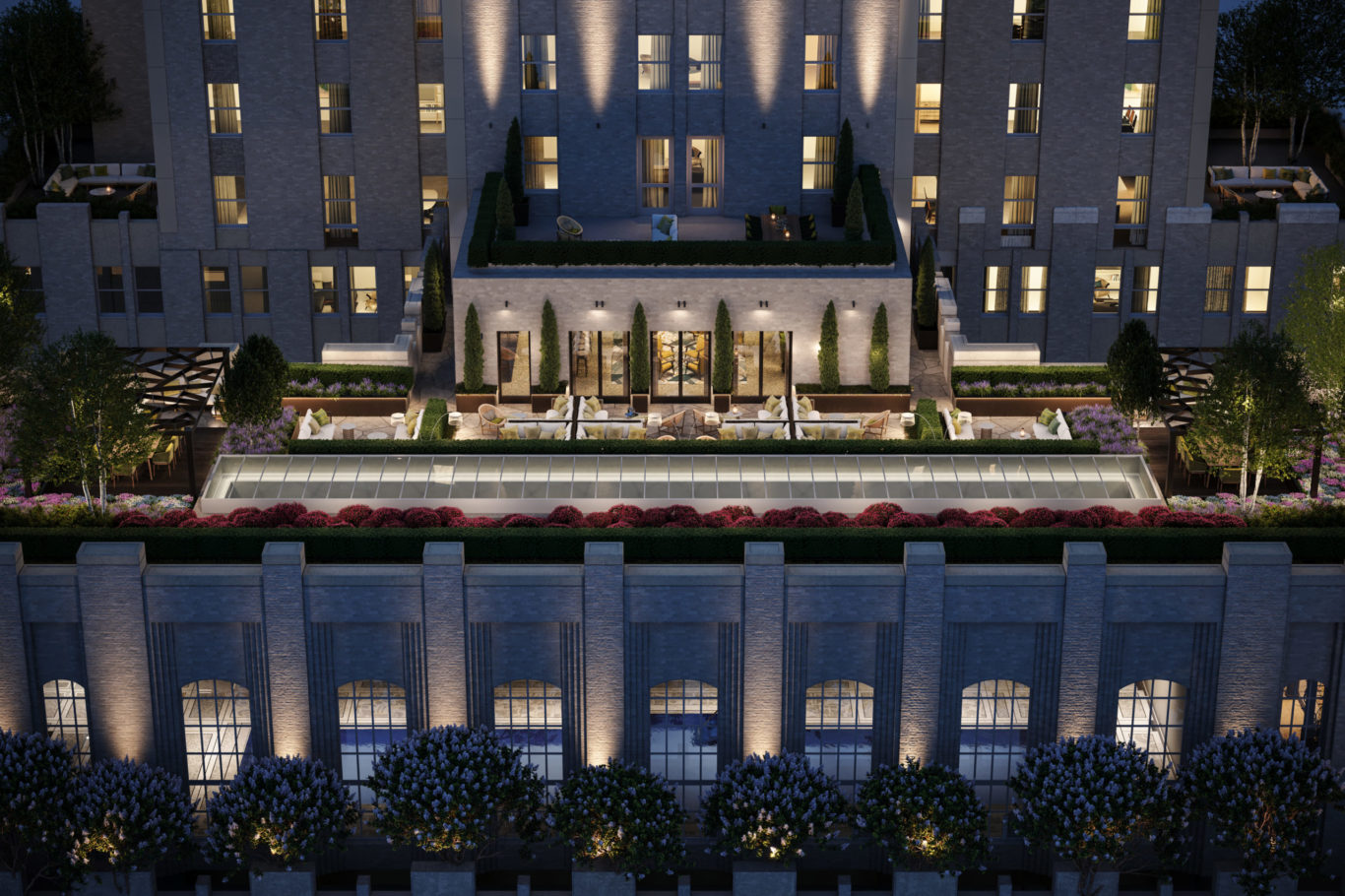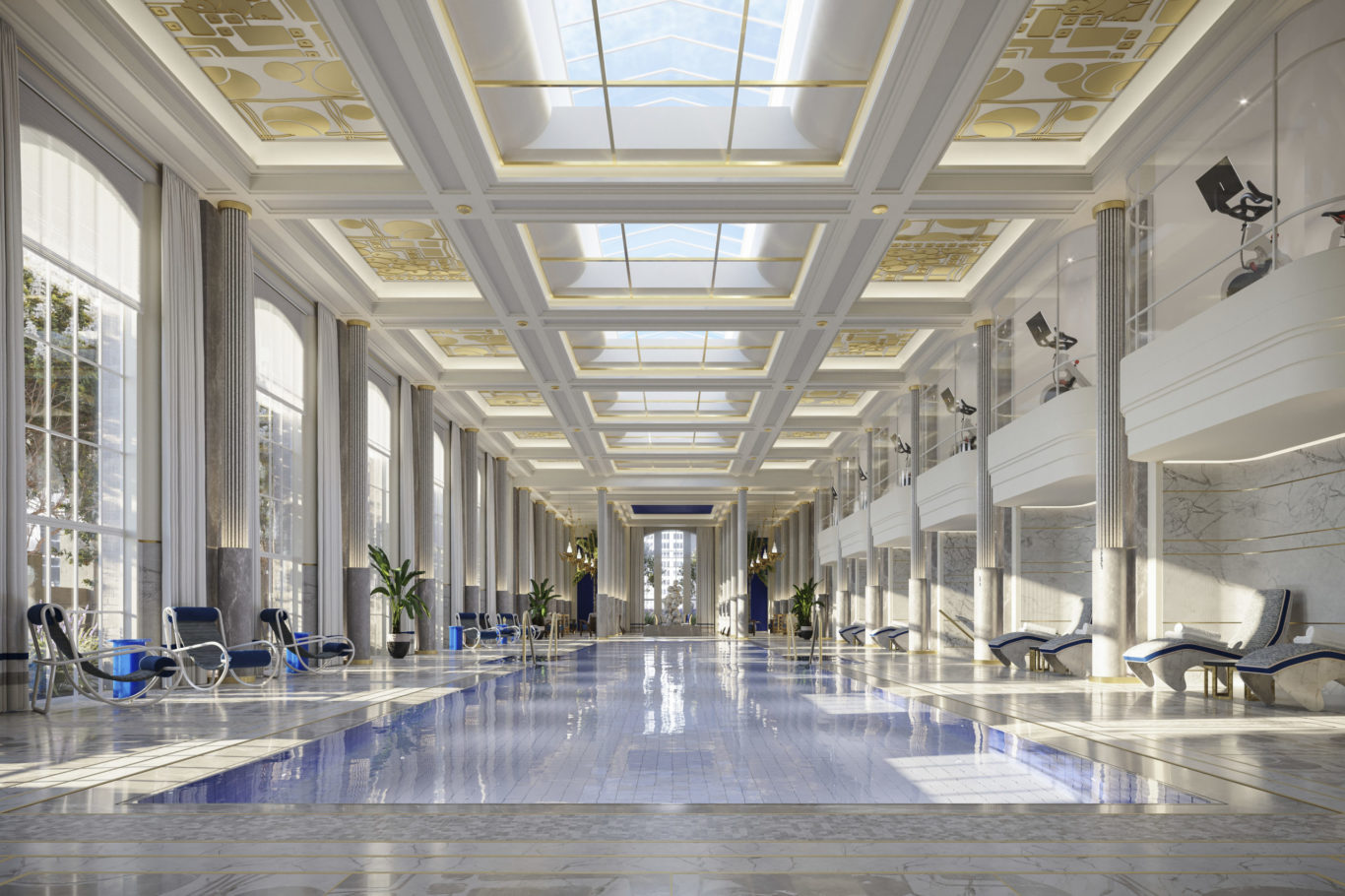Renewing New York’s “unofficial palace”
When the Waldorf Astoria opened its doors on Park Avenue in 1931, the new building became an instant New York City icon. The world’s first skyscraper hotel has played host to celebrities, royalty, and heads of state—as a favored setting for elegant social events, it earned the nickname “the unofficial palace of New York.” Designed by the firm Schultze & Weaver, the full-block building features the stepped massing that is emblematic of Art Deco architecture, with distinctive twin towers at the top. It is clad in limestone, brick in a shade known as “Waldorf Gray,” and bronze entryways that lead to lavish interiors. In 1993, the New York City Landmarks Preservation Commission designated the exterior as a city landmark. Two decades later, a series of its indoor public spaces—from the main lobby and the surrounding corridors to many of the spaces above—were landmarked, as well.
But in the 90 years since its completion, the Waldorf Astoria has undergone piecemeal renovations, including many that heavily altered the architecture. This highly complex project will restore the exterior and the landmarked interior and convert the former 1,400-room hotel into a 375-unit residential building and 375-key boutique hotel.
